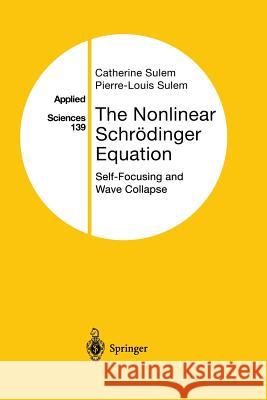The Nonlinear Schrödinger Equation: Self-Focusing and Wave Collapse » książka
The Nonlinear Schrödinger Equation: Self-Focusing and Wave Collapse
ISBN-13: 9781475773071 / Angielski / Miękka / 2013 / 350 str.
Regardez les singularit es: il n y a que ca, qui compte. Gaston Julia The nonlinear Schr] odinger (NLS) equation provides a canonical descr- tion for the envelope dynamics of a quasi-monochromatic plane wave (the carrying wave) propagating in a weakly nonlinear dispersive medium when dissipative processes are negligible. On short times and small propagation distances, the dynamics are linear, but cumulative nonlinear interactions result in a signi?cant modulation of the wave amplitude on large spatial and temporal scales. The NLS equation expresses how the linear dispersion relation is a?ected by the thickening of the spectral lines associated to the modulationandtheresonantnonlinearinteractions.Inoptics, itcanalsobe viewed as the extension to nonlinear media of the paraxial approximation, extensively used for linear waves propagating in random media. The NLS equation assumes weak nonlinearities but a ?nite dispersion at the scale of the carrying wave, while in situations where both dispersion and nonlinearities are equally weak, a reductive perturbative exp- sion leads to long-wavelength equations, like the Korteweg de Vries, the Benjamin Onoor, inseveraldimensions, theKadomtsev Petviashvilieq- tions (Segur 1978, Ablowitz and Segur 1981). This class of equations also includes the so-called derivative nonlinear Schr] odinger (DNLS) equation obeyed by dispersive Alfv en waves propagating along an ambient magnetic ?eld in a quasi-neutral plasma, because of a phase-velocity degeneracy in the dispersionless limit (see Mjolhus and Hada 1997 for a recent review)."











